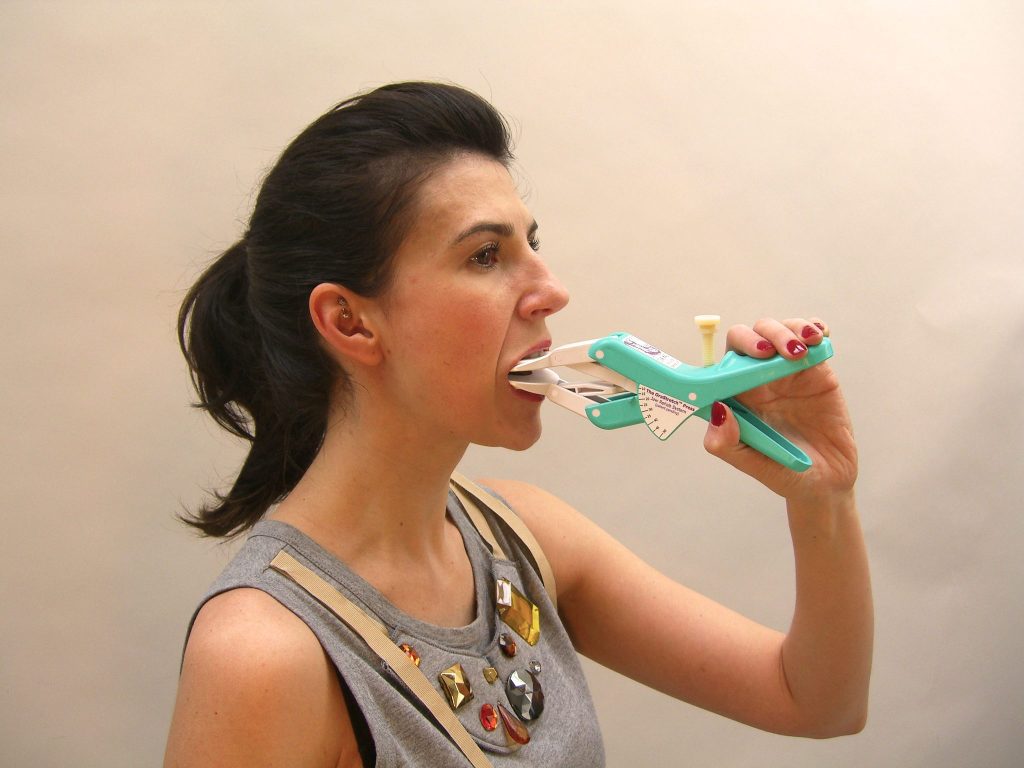TMD and nutrition – the role diet plays in helping patients manage symptoms and maintain good health
Featured Products Promotional FeaturesPosted by: Dental Design 27th February 2023

Temporomandibular disorder (TMD), a set of conditions characterised by pain and discomfort in the temporomandibular joints (TMJs), can compromise nutritional status. A person with TMD may find it too sore to bite and chew, so will eliminate certain foods and instead eat a ‘soft’ diet, which although adequate initially, may not provide the range of nutrients needed to stay healthy in the long term. Particularly if they’re elderly, or rehabilitating from illness or surgery, poor nutrition can lead to other problems, exacerbate existing ones and impede recovery.
Mild or moderate TMD can come and go and is generally eased with simple strategies, such as taking over-the-counter pain relief or applying heat or cold to the area. Some conditions that fall under the TMD term, however, can significantly affect quality of life, such as trismus, when a person is unable to open their mouth wider than 35mm. This is one example of when TMD can make mastication painful, perhaps unbearably so. A patient’s enjoyment of eating will often be diminished, too; a key point because, even after their TMD has improved, a lack of pleasure in food may remain. This isn’t just a nutritional issue; socially, this can prevent someone living life to the full, impacting their emotional wellbeing.
 After a diagnosis of TMD, treatment plans should assess what changes can be made to minimise eating-related discomfort, which also enable the individual to maintain good health. Their diet should incorporate foods from all the main groups, so soft dairy/dairy alternatives, soft fruit and vegetables without seeds or skin, which can be mashed, cooked and/or puréed or served as a smoothie or soup (rice could be added for bulk, if the patient can tolerate it). For protein, meat can be slow-cooked to tender and fish served unbreaded; vegetarian/vegan alternatives include mashed tofu, beans and pulses. For sweetness, there are plenty of options and, if gaining weight is a priority, smooth ice-cream, custard and milkshakes will add calories. Although weight loss is common for people with TMD, others may find they have gained, particularly if they are suffering from another systemic condition, like back pain, which has limited their mobility. Working with a dietician will help them stay well-nourished, while avoiding unwanted extra pounds. Even if a patient doesn’t need to gain or lose anything, while they’re managing TMD, they should eat plenty of nutrient-rich foods. Avocados, for example, are soft, high in healthy monosaturated fats, as well as being a source of folic acid, potassium and other important vitamins.
After a diagnosis of TMD, treatment plans should assess what changes can be made to minimise eating-related discomfort, which also enable the individual to maintain good health. Their diet should incorporate foods from all the main groups, so soft dairy/dairy alternatives, soft fruit and vegetables without seeds or skin, which can be mashed, cooked and/or puréed or served as a smoothie or soup (rice could be added for bulk, if the patient can tolerate it). For protein, meat can be slow-cooked to tender and fish served unbreaded; vegetarian/vegan alternatives include mashed tofu, beans and pulses. For sweetness, there are plenty of options and, if gaining weight is a priority, smooth ice-cream, custard and milkshakes will add calories. Although weight loss is common for people with TMD, others may find they have gained, particularly if they are suffering from another systemic condition, like back pain, which has limited their mobility. Working with a dietician will help them stay well-nourished, while avoiding unwanted extra pounds. Even if a patient doesn’t need to gain or lose anything, while they’re managing TMD, they should eat plenty of nutrient-rich foods. Avocados, for example, are soft, high in healthy monosaturated fats, as well as being a source of folic acid, potassium and other important vitamins.
All healthcare professionals involved with a TMD care plan can support nutrition motivation. If the pain is severe and chronic, the thought of eating, let alone preparing a meal, can be exhausting. If someone has had to change their diet, and has eliminated high fibre foods that are often difficult to chew, they may have become constipated. Staying hydrated is important, and warm drinks can have a stimulant effect. Herbal infusions may be the most beneficial, as some TMD patients have reported that avoiding caffeine, which can “excite” the nerves, eased their symptoms.[i] To add fibre, seed and nut-free breads, particularly with a high bran content, can be soaked to in water or milk and finely-ground flax seeds are good when added to a drink or soup.
 There are various therapies for TMD and a combination of several are often used in care and management plans, for example drugs and medication, psychotherapy and cognitive therapy (effective for bruxists and chronic nail-biters, pen chewers etc.). In more complex situations, speech therapy may be required, especially after surgery. Physical therapies include jaw exercises and learning how to adopt a correct posture to avoid straining the neck and shoulders. There are tools, too, that a patient can safely use at home. The OraStretch Press, distributed by Total TMJ, is a device that enables the user to maximise their range of motion, reduce pain and help the muscles around the jaw get stronger. Typically, it can add 1-2mm per week to how wide a person with TMD can open their mouth. For healthcare professionals, products like these provide an easy way to support people in dealing with this debilitating, often isolating condition.
There are various therapies for TMD and a combination of several are often used in care and management plans, for example drugs and medication, psychotherapy and cognitive therapy (effective for bruxists and chronic nail-biters, pen chewers etc.). In more complex situations, speech therapy may be required, especially after surgery. Physical therapies include jaw exercises and learning how to adopt a correct posture to avoid straining the neck and shoulders. There are tools, too, that a patient can safely use at home. The OraStretch Press, distributed by Total TMJ, is a device that enables the user to maximise their range of motion, reduce pain and help the muscles around the jaw get stronger. Typically, it can add 1-2mm per week to how wide a person with TMD can open their mouth. For healthcare professionals, products like these provide an easy way to support people in dealing with this debilitating, often isolating condition.
The TMJs are among the most-used joints in the body. Because TMD can be caused by various things from overuse to injury, bad posture and stress, treatment tends to be multiagency, with the patient exploring ways to feel better, manage their TMD and improve long-term comfort, alongside a range of different professionals. Due to the potential for compromised nutrition with TMD, dietary advice will be part of care and management plans, in terms how food choices can ease masticatory pain, as well as promote good health.

For more details about Total TMJ and the products available, please email phil@totaltmj.co.uk or karen@totaltmj.co.uk
[i] King’s College Hospital. Patient Information Leaflets, Temporomandibular Dysfunction. Accessed at: https://www.kch.nhs.uk/patientsvisitors/patients/leaflets (September 2022).








